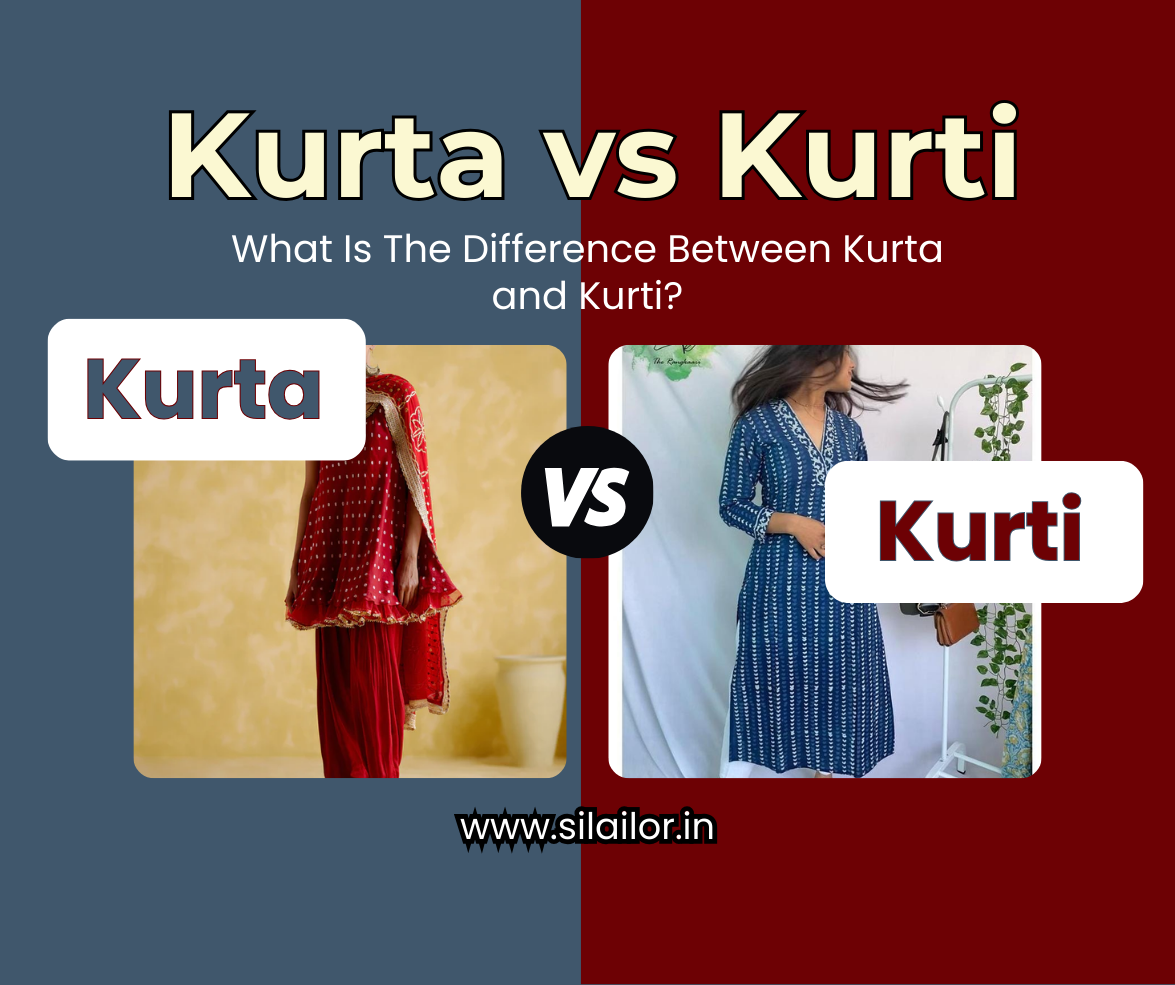Kurtis and kurtas are traditional Indian garments that have been popular among women for a long time. Over the years, they have gone through significant changes in terms of styles and designs, but they have remained a part of Indian fashion. Although these two garments have similar shapes and structures, many people are not aware of the differences between them. To get a custom made kutra and kurti, you can choose our online tailoring service.
In this blog, we will discuss the distinctions between them so you would have a better understanding during your next shopping spree.
Definition of a Kurti
Kurti is a type of top-upper garment that sits above the waist and comes in various collar shapes, such as V-neck, boat neck, and mandarin collar. It is shorter and more fitted than a kurta and is often worn with casual and traditional bottoms.
Definition of a Kurta
A kurta is a traditional loose-fitting collarless shirt worn by women in South Asia. It is typically longer than a kurti, falling below the knee. Kurtas are often made of light fabrics and may be plain or embellished with embroidery/prints. They can be worn with a variety of bottoms, including salwars, churidars, or jeans, and are suitable for both casual and formal occasions.
Origin and History of Kurti and Kurta
Origins of Kurti
Kurtis originated in northern India and are considered ‘the daughter of traditional long kurtas’. They are predominantly worn by women in the north, while the south prefers sarees. It is a modern trend, possibly less than 200 years old. It arose due to increasing Mughal influence and modesty standards.
Origins of Kurta
The kurta originated from Central Asian nomadic tunics and has evolved over the centuries as a garment for everyday wear and formal occasions in South Asia. It gained popularity during the Mughal period, especially after the Muslim conquest and the reign of Mahmud of Ghazni. The word “kurta” has its origins in Urdu and Sanskrit, and it is commonly worn in India, Pakistan, Afghanistan, Nepal, and even Sri Lanka with a variety of bottoms and fabrics.
Kurta VS Kurti – What’s The Difference?
Let us have a look at some of the most prominent differences between kurti and kurta.
1 – Length and Fit
Kurtas and Kurtis differ in terms of length and fit. Kurtas are long and typically reach the calf, while Kurtis are short and usually sit above the waist or at hip length. The most important difference between kurta and kurti is the length.
In terms of fitting, Kurtas are loose and rectangular in shape, providing comfort and coolness during summer days. They match well with different lowers such as leggings and pants. Kurtis, on the other hand, are more form-fitting and tapered at the waist, providing a flattering shape.
2 – Necklines
The difference between kurtas and kurtis can also be seen in their necklines. Kurtas are traditionally collarless, although some modern designs may incorporate a standing collar. In contrast, kurtis offer a variety of collar styles and designs, such as boat-necks, V-necks, keyholes, and off-the-shoulder styles. Some kurtis even have complex finishes like a pentagon, angrakha, or one-shoulder designs.
3 – Fabrics and Designs
Kurtas are typically made with breathable materials like cotton or silk, while winter kurtas can be made with wool or khadi silk. Kurtis, on the other hand, are associated with more feminine-friendly materials like cotton, linen, silk, and chiffon.
Both kurtas and kurtis come in various designs and styles, such as embroidered, printed, plain, embellished, short, and long.
4 – Sleeve Lengths and Designs
Kurtis usually has a sleeve length of 3/4th or full length, while some are sleeveless. On the other hand, traditional kurtas have straight sleeves that fall to the palm without constriction.
As for the sleeve designs, kurtis offer a variety of stylish options such as bishop, slit, one-shoulder, bell, flutter, and frill sleeves.
Traditional kurtas typically have straight sleeves without any particular design, however, they may have some embroidered or printed motifs on them.
5 – Style and Occasion
Both kurta and kurti are popular ethnic attire for women for any formal or informal occasion. Kurtas are simple yet elegant outfits that are often decorated for special occasions. Kurtis are versatile and can be worn to formal events or even dressed down for casual ones. Recently, kurtis have become popular as business casual wear in the Western world. Bottom of Form
Where to Buy Custom-made Kurtis and Kurtas?
There are many great brands to buy custom-made kurtis and kurtas from. But for those living in India, Silailor is the best option. As India’s number one ladies tailor in Delhi, Silailor offers a wide range of customization options, including fabric, design, and sizing. With exceptional customer service, online delivery, and affordable prices, Silailor is the perfect choice for anyone looking for a high-quality custom-made kurti or kurta.
Conclusion
Kurta and kurti are beautiful and versatile outfits that represent the rich culture of South Asia. Although they share some similarities, they have distinct features that set them apart, including their length, materials, sleeve designs, and collar options.
Whether you’re dressing up for a wedding or dressing down for a family gathering, both are the perfect addition to your wardrobe. With their unique designs, complex detailing, and comfortable fabrics, they are perfect for any occasion.
There are many great brands in the world, such as Silailor, that would be honoured to make a beautiful custom-made kurta or kurti according to your personal taste and style.


